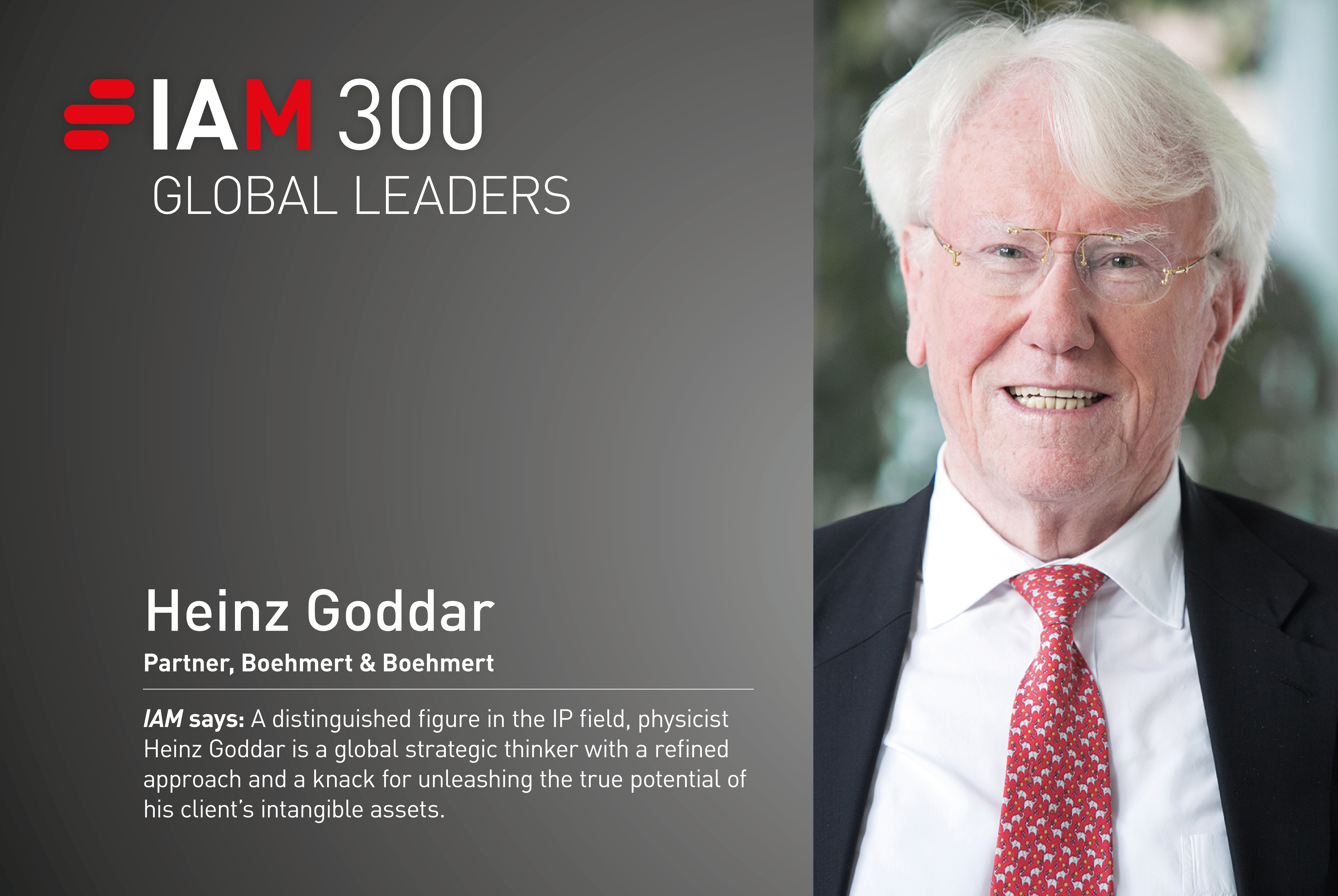Heinz Goddar
You have been an editor of the handbook Trade Secrets Throughout The World since January this year. What are your top tips for how to incorporate trade secrets into an IP portfolio?
Protecting innovations with trade secrets has recently become more urgent than ever. During the pandemic, one often heard from patent holders for covid-19 vaccines and treatments that a licence, whether voluntary or compulsory, for patents concerning these technologies would not help licensees produce them – additional secret know-how and skills would be necessary.
If that is true, one would have to think of a system where core technologies are protected by patents, which, in order to be valid, need to be enabling. If one could create a trusted depository for additional know-how (eg, a blockchain-secured depository where access could only be given by voluntary arrangements between a know-how depositor and an interested party like one wishing to make experimental use of clauses like in Article 11(2) of German Patent Act or by compulsory licences), it would work for biological inventions with regard to the depository for biological material that has existed in Budapest under WIPO for a long time. Open innovation agreements would possibly contain, then, a first royalty for the patent-protected part of the technology and a second royalty for the trade secrets to be used – with everything licensed under FRAND conditions. The depository could also have learning materials (ie, organised data supplies) that are necessary for training self-learning AI systems and the like. WIPO or some other suitable organisation should build such a trusted depository sooner rather than later.
You told IAM last year that the European Commission was considering proposals you made in relation to SEP questions. What is your take on the recent draft SEP regulation proposal, and how do you expect it to affect IP strategy in Europe?
The recent draft SEP regulation of 27 April 2023 meets my more or less unrestricted approval (COM(2023)232). I like the provision introducing an SEP register that shows to which standard certain patents belong as real SEPs. Further, an essentiality test and a FRAND-determination arbitration procedure are necessary before SEPs can be enforced by injunctive requests in patent infringement courts. The same applies to my long-published proposal that top-down aggregate royalties would be the only ones to fulfil FRAND conditions, as per Huawei or ZTE.
The system of the proposal is similar in its essential elements to what I have been proposing since 2012 as a valuable instrument comparable to the LOR systems that several EU countries (eg, Germany) have provided for (Article 23(4) of the German Patent Act).
How would you characterise the current patent-eligibility landscape in Europe, and what changes would you like to see?
My expectation is that getting a licence under an SEP portfolio will become easier and cheaper, particularly for SMEs, so that court-handled litigation cases can be drastically reduced.
As for the patent-eligibility landscape, I would think that one should revisit the question of whether research tool-related patents should be allowed to contain reach-through claims. That would introduce the possibility that medicaments found or identified using a research matrix could be equally protected by patents, like inventions made by secondary inventors using patented AI systems as tools to create new products.
What, for you, are the key elements of a successful litigation strategy?
Careful feature-by-feature analysis of the allegedly infringing embodiment and disputed patent would be the start. Further, a global – or at least Europe-wide – litigation strategy should be used, like going to countries that allow practically automatic injunctive relief (eg, Germany, the United States and possibly the United Kingdom) for collecting satisfyingly high damages. Then, overall settlement on a global basis or European basis should be used.
There is increasing talk about how arbitration might be used to settled SEP/FRAND disputes – what are some of the pros and cons of using alternative dispute resolution in this space?
Mandatory arbitration before litigation should be used to settle SEP/FRAND disputes. Pros are that incompetent courts, with all due respect, would not have to handle so many technically difficult cases. Financially weaker SMEs that cannot bear high patent litigation costs like we are currently seeing in Germany would have much easier access to SEP-protected technologies. The con would be that in normal arbitration procedures, results would not be public. However, this could be solved by a publication system like that proposed in the European Commission SEP draft regulation.
Heinz Goddar
European and German Patent and Trademark Attorney
[email protected]
Based in Munich, Heinz Goddar is a partner at Boehmert & Boehmert and teaches IP law at the University of Bremen, Bucerius Law School and the Munich IP Law Center, as well as several universities in Asia and the United States. Prof Dr Goddar is a past president of LES International and LES Germany, and he has been a co-editor of Trade Secrets Throughout the World since January 2023.
